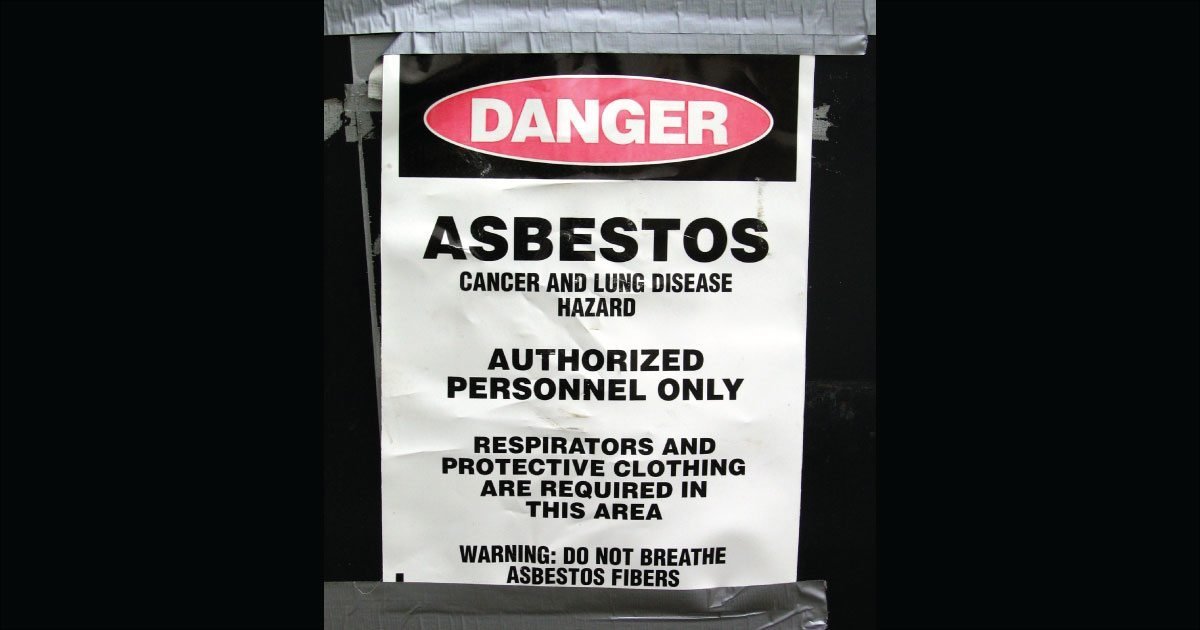Your Guide to Effective Asbestos Evaluating Treatments
Asbestos screening treatments are a critical element of making certain the safety and security of interior environments, particularly in older buildings where this unsafe material might be present. The prospective health dangers connected with asbestos direct exposure make it crucial to come close to screening with accuracy and thoroughness. From understanding the residential properties of asbestos to properly translating test results, an extensive overview can equip people with the knowledge and tools required to navigate this complicated process. Remain tuned to discover the important steps and considerations that can assist you secure versus the dangers positioned by asbestos.
Comprehending Asbestos and Its Threats
Asbestos, a naturally occurring mineral known for its heat resistance and longevity, poses extreme wellness dangers when its fibers are inhaled or consumed. Asbestos Air Sampling. Direct exposure to asbestos can lead to major health and wellness conditions such as lung asbestosis, mesothelioma cancer, and cancer. Regardless of its helpful properties, asbestos has actually been extensively banned in numerous countries because of the tried and tested web link in between asbestos direct exposure and these deadly conditions
The threat hinges on the microscopic fibers that can easily come to be airborne when asbestos-containing products are disrupted or harmed. As soon as breathed in, these fibers can end up being lodged in the lungs, creating swelling and scarring in time. The latency period in between exposure to asbestos and the development of related conditions can extend several decades, making early discovery and avoidance critical.
Asbestos was generally used in construction products, insulation, and automotive parts prior to its health dangers were fully recognized. Today, correct screening and removal of asbestos-containing materials are necessary to secure individuals from the risks connected with asbestos direct exposure.
Identifying Potential Asbestos Materials
The recognition of potential asbestos materials is a critical step in ensuring the security of people exposed to harmful materials in numerous settings. Asbestos can be located in a broad range of building products, consisting of however not limited to insulation, ceiling floor tiles, flooring ceramic tiles, cement sheets, and roof shingles - Asbestos Air Sampling. Recognizing these products properly is vital to properly taking care of the threats related to asbestos direct exposure

In instances where visual assessment is inconclusive, examples of presumed materials can be gathered and sent out to accredited research laboratories for screening. These labs employ specialized methods such as polarized light microscopy or transmission electron microscopy to precisely figure out the presence of asbestos fibers in the examples. By following extensive identification procedures, people can successfully minimize the risks related to asbestos direct exposure.
Picking the Right Screening Technique
Identification of potential asbestos products plays an important role in determining the appropriate screening technique for accurate asbestos fiber discovery. Once presumed products have been determined, selecting the ideal testing method is essential to ensure reputable outcomes. There are two key approaches for asbestos testing: polarized light microscopy (PLM) and transmission electron microscopy (TEM) PLM is frequently utilized for initial screening as it is cost-efficient and supplies quick results. PLM has limitations in discovering asbestos fibers that are smaller sized than 1 to 3 microns. On the various other hand, TEM is a more advanced technique that can properly determine asbestos fibers at the more asbestos ultrastructural degree. While TEM is extra lengthy and pricey than PLM, it uses higher level of sensitivity and uniqueness in asbestos detection. Choosing the proper testing approach depends on various factors such as the sort of material being evaluated, the called for level of sensitivity of the analysis, and the offered spending plan. It is important to seek advice from certified asbestos screening experts to determine the most appropriate method for your certain testing requirements.
Performing Sample Collection Securely
When accumulating examples for asbestos testing, prioritizing security actions is vital to minimize prospective exposure threats. Asbestos fibers are harmful when disrupted, making it crucial to adhere to appropriate safety procedures during sample collection - testing asbestos near me. Before starting the sampling procedure, make certain that you are outfitted with individual protective equipment (PPE) such as disposable coveralls, goggles, masks, and handwear covers to avoid breathing or call with asbestos fibers
It is necessary to wet the tasting location making use of a mild haze of water to protect against the fibers from becoming air-borne during collection. Usage care when gathering samples and stay clear of aggressive scuffing or piercing that could launch asbestos fibers right into the air. Rather, very carefully reduced a tiny piece of the material making use of suitable devices and place it right into a sealed container for evaluation by a qualified research laboratory.
Furthermore, identifying each example asbestos eaves with thorough info concerning the sampling area, date, and collection agency's name is necessary for accurate record-keeping and analysis. By following these safety and security guidelines, you can perform sample collection for asbestos screening successfully while lessening the threat of direct exposure.
Interpreting Test Outcomes and Following Actions

Final Thought
Finally, efficient asbestos screening treatments are essential in determining and taking care of possible health dangers related to asbestos direct exposure. By recognizing the threats of asbestos, recognizing prospective materials, selecting the right screening method, carrying out sample collection safely, and translating test results accurately, organizations and individuals can take the required actions to safeguard themselves and others from the dangerous impacts of asbestos. It is vital to prioritize safety and correct screening protocols to ensure a healthy setting for all.

Recognition of potential asbestos materials plays a critical role in figuring out the ideal screening technique for accurate asbestos fiber discovery. The examination results will certainly indicate the visibility or lack of asbestos, the type of asbestos fibers present, and the concentration levels.In final thought, reliable asbestos testing procedures are vital in recognizing and handling potential health and wellness risks linked with asbestos exposure. By understanding the risks of asbestos, recognizing possible products, selecting the best screening method, carrying out example collection safely, and analyzing examination results precisely, companies and people can take the needed actions to safeguard themselves and others from the damaging impacts of asbestos.